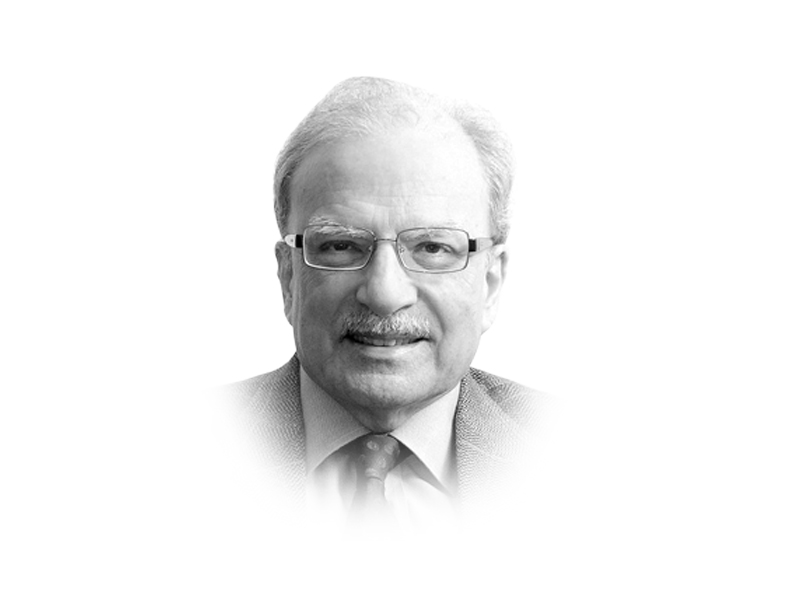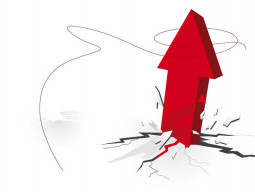
According to press reports, the government headed by Prime Minister Nawaz Sharif has indicated that it is seriously engaged in developing a plan for reviving the economy and setting it on the path of growth over the medium term. This means laying the ground for moving forward, at least to the time when the government now in power faces the electorate again. That will be in 2018. The new regime’s ambition is to go beyond that stage. Ahsan Iqbal, the planning minister, addressed a press conference in Islamabad in which he declared that it was [the] intention of his government to develop a “vision for the year 2025”. This means indicating what will be the government’s priorities for the next dozen years. The minister said that he expects not only to roll out the detailed programme by the end of the year but also start implementing it. He mentioned several areas to which the government will pay special attention. These include energy, infrastructure, exports, education and social development.
A day later, the prime minister went on television to deliver his first address to the nation, since taking office on June 5. He also elaborated on some of his government’s priorities. High among them were energy and extremism. Both, he said, were badly hurting the people and the economy. But he did not promise that the problems would be solved any time soon. For energy, he said, it will take the entire five-year term for which he was elected, to put the country in a situation where it did not have to experience long periods of blackouts every day.

An elected government, in laying out a plan for the future, must cater to the needs of its constituencies. Ignoring them ensures a rough treatment by the electorate at the time of the next polls. It is hard to tell whether the Sharif government has done any serious analysis of the aspirations of the community of voters that put the PML-N, the prime minister’s party, in power, in Islamabad. The proportion that voted for him and his party was much larger than its traditional base of support. This means that a large number of people deserted the PPP, the party that was in power for five years. It would be safe to suggest that the swing that occurred was centered in what is loosely described as the ‘middle class’. What is this class, how large is it, what are its aspirations, what does it want from the government, how will its growing importance affect the country’s future are some of the questions that have invited a great deal of attention by the academic community as well as those working in the area of public policy.
There is now recognised methodology for estimating the number of people who live in poverty. Their number is determined by estimating those who don’t earn enough to have access to basic needs. For a long time the proportion of these people in the populous countries of South Asia hovered around 40 per cent. In fact, the ‘bottom 40 per cent’ became a commonly used term for referring to absolute poverty. That changed once the South Asian nations began to see rapid development of their economies. Pakistan, for about a couple of decades, led South Asia before it fell back and India became the leader. Nonetheless, it is now accepted that the proportion of people who are poor in South Asia had declined to about 25 per cent of the total. If [we] take this group out and consider the top 10 per cent of the income distribution scale as the well-to-do, the remaining 65 per cent of the population should be the middle class. At first glance this number seems very high but some important work done by the Pakistan Institute of Development Economics (PIDE) reaches the same conclusion. In this context, it would be useful to mention some of the findings in the work by Durre Nayyab, a researcher at the PIDE. She published an important working paper a couple of years ago, under the title, “Estimating the Middle in Pakistan”. The paper is more than estimating the number of people who can be said to belong to the middle class in Pakistan. It also has estimates of their distribution in different provinces of the country, their division between the urban and rural areas and the economic activities in which they are engaged.
Using what she calls the “expanded middle class concept”, she reaches the conclusion that Pakistan has a middle class “that is around 61 per cent of the total population which approximates to a substantial 61 million. The middle is found to be a more of an urban phenomenon with its size being much larger in the urban areas, at both the national and provincial levels”. Punjab, with 61.3 per cent of its people classified as middle class, has the largest proportion of this group in its population. Balochistan, not surprisingly, has the lowest proportion — 52.1 per cent — in this category. In Punjab, 67.4 per cent of the urban population is middle class. This is not the highest among the country’s four provinces. Of Balochistan’s urban population, 73.3 per cent is in the middle class.
If it is indeed the middle class that has brought Nawaz Sharif and his party back to power, what should they do, in terms of an economic strategy, to retain the political support of this important group? I will take up this question in this space next week.
Published in The Express Tribune, August 26th, 2013.
Like Opinion & Editorial on Facebook, follow @ETOpEd on Twitter to receive all updates on all our daily pieces.
COMMENTS (6)
Comments are moderated and generally will be posted if they are on-topic and not abusive.
For more information, please see our Comments FAQ





















































@x: @RAW is WAR:
Thanks for the comments on my post.
Just yesterday, the Indian parliament passed a food security bill that would provide subsidized food to 70% of the population. If the the middle class is over 65%, why would they need subsidized food?
In case of Pakistan and India, the per capita annual GDP is about $1000 in real dollars. How can either country claim to have over 65% of middle class people with such a low per capita average figure?
These so-called analysts often drown themselves in over analysis with faulty assumptions with the consequence of the "garbage in garbage out" result.
@Observer: Good. I don't get how lumping widely disparate groups is a fair categorization. In addition, what is the income level of these groups that they can afford 'basic necessities'. Can they afford clean drinking water ala bottled water as the government's water supply contributes to many diseases. can they afford good or adequate health care if some child falls sick or an accident occurs? Can they afford to get their children out of the poverty trap? If merely food and shelter was the criteria for not being poor, then most animals also belong to the middle class, and a lot of them don't have work like donkeys to earn basic necessities'.
@Observer:
good points. You can add one more category of extremely rich also.
I thought Pakistan's population was 180 million. 61 percent of 180 million is not 61 million.
SJB have you ever said anything that is fresh and original?
The proportion of middle class is definitely not 65% in South Asia, especially India and Pakistan. The problem lies in lumping wide income levels in one rigid "middle class" group.
A more realistic way of grouping would be: 1) The absolute poor who can't afford a daily meal and basic necessities, 2) The lower class who live in dire poverty but are not starving. These people have a very low quality of living but are manage to eek out a basic existence, 3) The lower middle class who have basic shelter, sufficient food and some basic comforts but can't pay for giving a quality education for their children. 4) The mid-middle class who have achieved a decent level of living in terms of creature comforts, can afford better quality food, but still struggle to pay for the education of their children. 5) The upper-middle class who can afford many luxuries, good standard of living, live in comfortable homes and can pay for their children's quality education. 6) The rich class who are wealthy.
In the above classification, the first three groups should be included in the "poor" segment based on their quality of life. These groups would amount to about 60% in India and Pakistan.